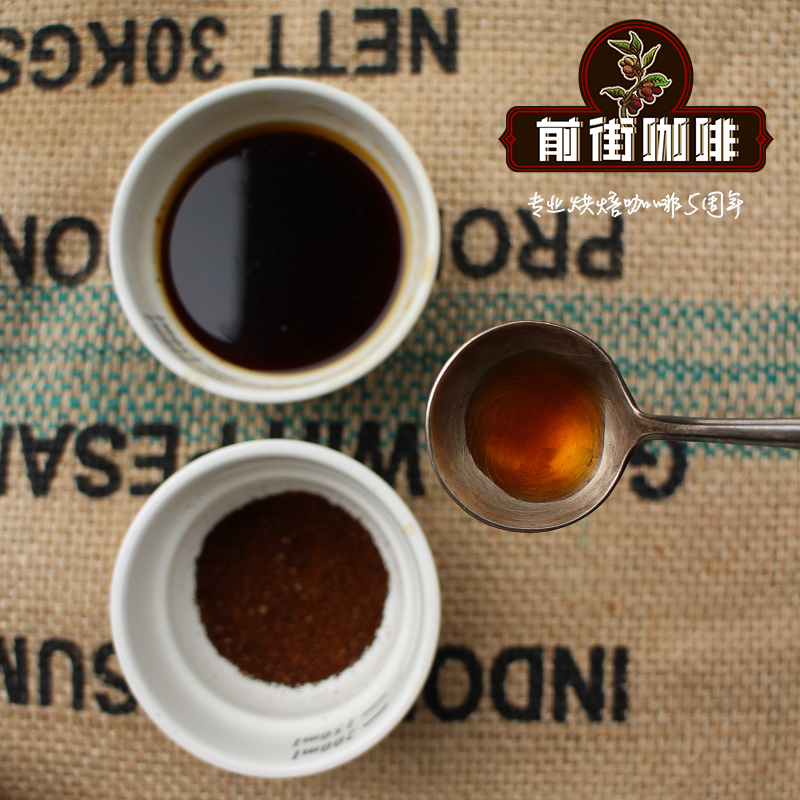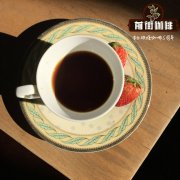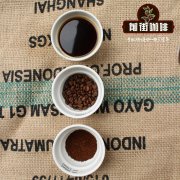How about Puerto Rican coffee? what's the flavor of Puerto Rican coffee?

Professional coffee knowledge exchange more coffee bean information please follow the coffee workshop (Wechat official account cafe_style)
Yaoke Puerto Rico Yauco, Puerto Rico
Yaoke, Puerto Rico and Jamaica are both Greater Antilles, located in the Atlantic Ocean of Central America, and are well-known island bean-rich countries. This batch comes from the Central Mountains of Puerto Rico, with an average elevation of 914 meters. Puerto Rican coffee has a history of more than two hundred years. Coffee was grown in 1736. At first, coffee was not the main cash crop, but mainly sugar crops. Because of the unrest in Europe, the residents of Corsica Island in the French Mediterranean moved to Puerto Rico around 1800. At that time, the valley had already been occupied by Spanish immigrants, so they chose to settle in the southwest mountains of the island, located near the city of Yaoke. In order to survive, they began to grow different crops. Coffee cultivation brought them a good income, and the coffee industry became the main local export cash crop in 1860. Yaoke is also a well-known coffee in Taiwan in the early days, but in recent years it has been quite rare because it has changed from domestic sales to orientation.
In 1736, coffee trees were introduced from Martinique to Puerto Rico. Most of the early coffee was grown by Corsican immigrants. By 1896, Puerto Rico ranked sixth in coffee production in the world.
Coffee in this country is generally carefully cultivated, with pure taste, aroma and heavy granules, among which the best is among the world's famous brands. The best coffee is Yauco Selecto, which means "Selecto".
Yaocote's coffee, grown only on three farms in the southwest of the island, is fragrant and has a long aftertaste. This kind of coffee is very expensive and its flavor is comparable to that of any other coffee variety in the world.
The mountain climate here is mild, the plants have a long mature period (from October to February), and the soil is high-quality clay. People here have been using an eco-friendly and intensive planting method, picking only fully ripe coffee beans and then washing them in a roller device for 48 hours. Yaocote chose coffee beans to be preserved in shells before they were shipped, and the skins were not removed until the order was shipped to ensure the best freshness of the coffee. Relevant U.S. government employees, such as FDA and USEA, will also be present when the goods are submitted, and they work to monitor producers' compliance with federal regulations. There are also practitioners from local evaluation boards who take 1 bag out of every 50 bags as samples and use international gauges to monitor their character.
Yaocote selected is a fascinating coffee, it has a complete flavor, no bitterness, rich nutrition, rich fruit, and is worth tasting.
The whole history of coffee in the Caribbean has a lot to do with Spanish reclamation. Coffee was not that important in the 18th century. The main work was to grow sugar-producing crops in fertile valleys. In the early 19th century (1800), the residents of Corsica in the French Mediterranean moved to Puerto Rico because the valleys had been occupied by Spanish immigrants. So they chose to settle in the southwest mountain area of the island, mostly near the city of Yuko. because of their efforts and determination, coffee cultivation brought them a good return. They dominated the coffee industry on the island in the 1860s. At that time, Puerto Rico's coffee bean production ranked sixth in the world, and the coffee trees planted by Corsican immigrants on the highlands were regarded as selected. The origin of Yauco Selecto coffee beans is mainly traced back to this period, but two severe hurricanes hit Puerto Rico in 1898. These two hurricanes destroyed the local coffee industry, and farmers had to wait two years to get the crops back to normal. During this period, the United States was very interested in Puerto Rico's sugar production, and European countries no longer imposed tariffs on Puerto Rico coffee beans as crops produced in their colonies. Dealt a heavy blow to Puerto Rican coffee.
The Caribbean Sea is a warm, romantic and mysterious sea, and a lot of good coffee is also around this ring sea, such as the Blue Mountains of Jamaica, Dominica, Crystal Mountain of Cuba, Yuko of Puerto Rico and so on. These are the most famous rare and expensive coffee in the world. These island beans give people a light milky aroma and elegant floral aroma, acidity and meticulous softness. Although it is still difficult to avoid the problem of easy water loss of coffee caused by the muggy climate on the island, the overall texture is the first-grade beans of coffee, and the main reason why Puerto Rican coffee is not easy to buy on the market is that the output is low and most of it is exported to Europe. coupled with the adverse effects of severe weather hurricanes on coffee crops, there will be no coffee to buy that year.
Important Notice :
前街咖啡 FrontStreet Coffee has moved to new addredd:
FrontStreet Coffee Address: 315,Donghua East Road,GuangZhou
Tel:020 38364473
- Prev

Kaduai Coffee Variety introduction what are the characteristics of Kaduai coffee? How about Kaduai coffee?
Professional coffee knowledge exchange more coffee bean information please pay attention to the coffee workshop (Wechat official account cafe_style) Kaduai is also an Arabica mixed race, is a mixed race of Mundo Novo Monowood (New World) and Caturra Kaddura, has a good ability to resist natural disasters, especially wind and rain resistance, it inherited the advantage of Kaddura's low height, a change of Mondono
- Next

What is island coffee? how about island coffee? what's the flavor of island coffee?
Professional coffee knowledge exchange more coffee bean information please follow the coffee workshop (Wechat official account cafe_style) in the coffee industry, speaking of coffee from the island, I think you must be no stranger to the Blue Mountains of Jamaica and Kona, Hawaii, are famous boutique coffee. In fact, if we talk about coffee from island origin, there is another kind of coffee that is worth talking about and tasting.
Related
- Beginners will see the "Coffee pull flower" guide!
- What is the difference between ice blog purified milk and ordinary milk coffee?
- Why is the Philippines the largest producer of crops in Liberia?
- For coffee extraction, should the fine powder be retained?
- How does extracted espresso fill pressed powder? How much strength does it take to press the powder?
- How to make jasmine cold extract coffee? Is the jasmine + latte good?
- Will this little toy really make the coffee taste better? How does Lily Drip affect coffee extraction?
- Will the action of slapping the filter cup also affect coffee extraction?
- What's the difference between powder-to-water ratio and powder-to-liquid ratio?
- What is the Ethiopian local species? What does it have to do with Heirloom native species?

